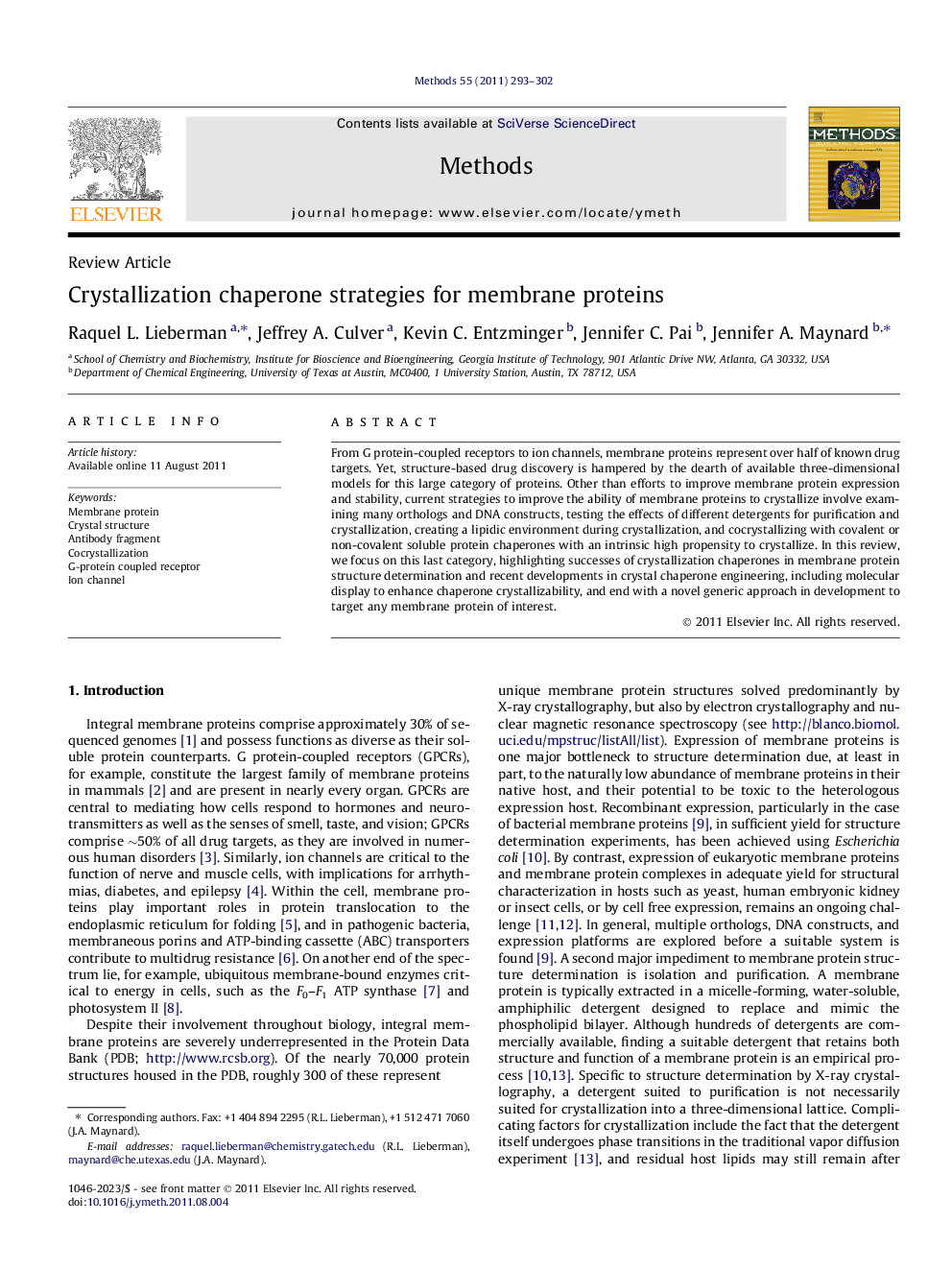| کد مقاله | کد نشریه | سال انتشار | مقاله انگلیسی | نسخه تمام متن |
|---|---|---|---|---|
| 1993700 | 1064700 | 2011 | 10 صفحه PDF | دانلود رایگان |

From G protein-coupled receptors to ion channels, membrane proteins represent over half of known drug targets. Yet, structure-based drug discovery is hampered by the dearth of available three-dimensional models for this large category of proteins. Other than efforts to improve membrane protein expression and stability, current strategies to improve the ability of membrane proteins to crystallize involve examining many orthologs and DNA constructs, testing the effects of different detergents for purification and crystallization, creating a lipidic environment during crystallization, and cocrystallizing with covalent or non-covalent soluble protein chaperones with an intrinsic high propensity to crystallize. In this review, we focus on this last category, highlighting successes of crystallization chaperones in membrane protein structure determination and recent developments in crystal chaperone engineering, including molecular display to enhance chaperone crystallizability, and end with a novel generic approach in development to target any membrane protein of interest.
► Binding partners, i.e. antibody fragments, can be key to high resolution membrane protein crystallization & diffraction.
► Crystallization chaperones immobilize flexible loops and provide hydrophilic surface area for crystal contact formation.
► Sophisticated in vitro selection technologies offer a rich source of potential crystallization chaperones.
► Alternate scaffolds, such as DARPins, anticalins, affibodies and fibronectin3 domains may be excellent chaperones.
► Antibodies binding peptides introduced into permissive membrane protein loops may be a generic chaperone approach.
Journal: Methods - Volume 55, Issue 4, December 2011, Pages 293–302